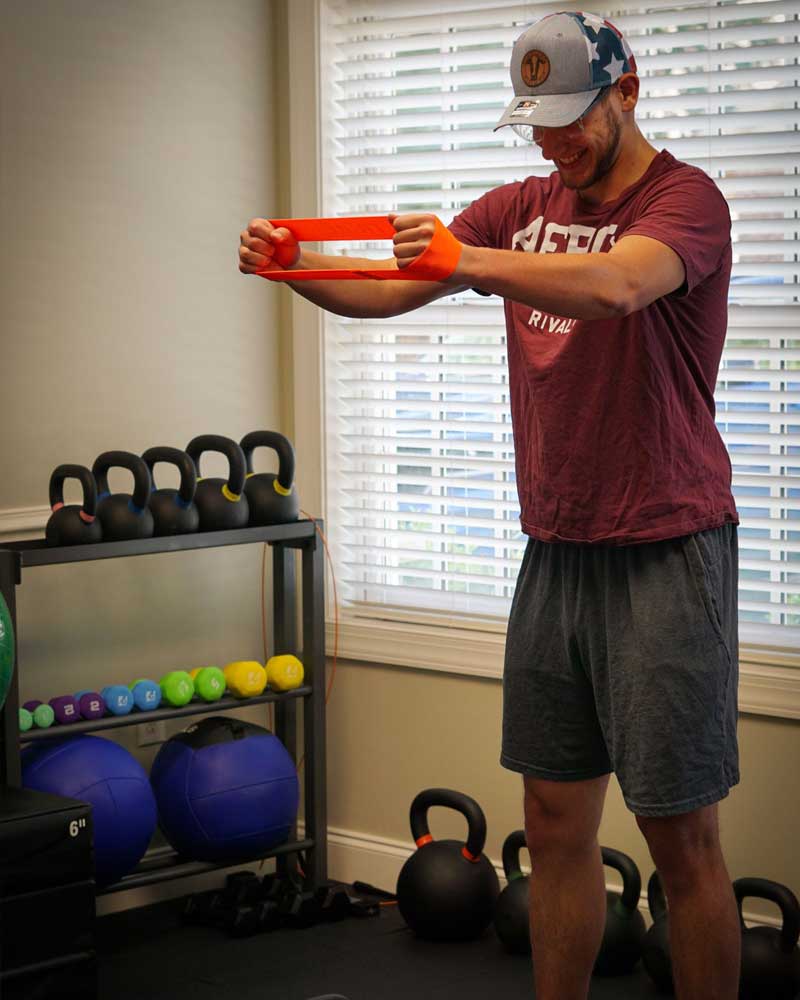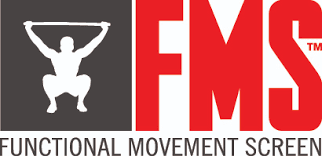Our Burlington NC office uses exercise therapy as a form of rehabilitation and treatment. This functional rehab helps you move better and feel better – faster!
The idea of exercise can bring about uncomfortable images of boring walks on inclined treadmills, sweating while wearing tight-fitting clothing, and feeling breathless and exhausted. Although this might be your experience at the gym, exercise therapy in our chiropractic office is specific, targeted, and designed to help improve the range of motion with your muscles and joints as part of a treatment approach. Exercise therapy can also help improve muscle strength and body stability, which improves response to treatment and reduces the likelihood of future injury.
Exercise therapy aka functional rehab is also vastly applicable to patients. In fact, exercise can benefit a myriad of conditions and circumstances ranging from low back pain while leaning over a sink and washing dishes, to whiplash from a motor vehicle collision, to improving athletic performance (even if it’s sitting and marathoning your favorite TV show without neck pain)!
Read on to learn more about exercise therapy and its benefits for musculoskeletal pain!



Patients who receive functional rehab in our Burlington office may have:
- Generalized muscle weakness
- Muscle injury (muscle strain)
- Ligament sprain or tearing
- Headaches
- Neck pain
- Loss of balance or proprioception
- Deconditioning
- Hip inflexibility
- Ankle pain
- Muscle pain
- Patellofemoral tracking disorders
- Shoulder pain
- Low back pain and tightness
- Upper back tightness
- Loss of range of motion
- Poor posture
- Fitness and strength goals
- Disc herniations
- And more
How does exercise therapy do all this?
Exercise therapy is just one approach to help you feel better, move better, and stay away from injures. Exercise is a complex movement requiring coordination through multiple joints, bones, muscles, ligaments, and tendons to accomplish the movement goal. Injuries to one or more of these structures affect how we move, exercise, and perform!
However, exercise may be the very thing needed to reduce pain, rehabilitate from injury, and improve performance. Exercise therapy may be as simple as movement modifications, or it could be a targeted regimen of multiple activities.
Ultimately, exercise can help simulate everyday activities. For example, the deadlift exercise simulates the same muscle activation and coordination as picking up our children or lifting a heavy box while moving. If an injured muscle prevents us from lifting heavy objects, like boxes, off the ground, then a deadlift is a safe exercise we can perform under medical supervision to help regain lost function and mobility while healing.
Another example of a valuable exercise is squatting. Squatting is a movement pattern used in most things we do throughout the day, including walking, picking up children, and even getting off the toilet! That’s a big deal!
The importance of stability and strength exercises
Strengthening muscles promotes stability and reduces overloading onto other soft tissue structures forced to compensate for the injury, such as tendons and joints. Standing upright, climbing stairs, playing sports for recreation, jogging, and even waking up by swinging our legs over the side of the bed all require an element of strength.
If a muscle is weak after being injured, then strength training is an effective approach to improve the contraction of the muscle in response to varying weights and loads. Body stability is important, too. We often lose balance and body awareness (proprioception) as we age. This increases the chance of falling and incurring serious injury in the elderly. Exercise therapy is a powerful method to maintain body stability as we age in a healthy manner!
Our approach to exercise therapy
Our chiropractic office offers physician-supervised and specific functional rehab as an option for treatment. Exercise therapy is not “one size fits all,” and your program of exercises may range from one movement to several forms of exercise.
Additionally, your exercise therapy plan may change over time depending on the amount of improvement we see during your treatment!
Approaches to treatment will depend on the severity, complexity, and duration (length of time) of your musculoskeletal complaint, as well as your overall health. Your doctor of chiropractic may recommend exercise therapy or may advise against it if another approach is better or more suited for your condition.
If exercise therapy is used during your appointment, you will be monitored for your body’s response and if the exercises are too much, not enough, or just right. Like going to the gym, results take repetition and consistency over the course of several days to several weeks. This is not a process that can be rushed. Every person’s condition is different and merits a specialized, individualized treatment plan and approach for what is right for you.
Depending on the treatment plan, exercise therapy may accompany other forms of treatment intervention such as spinal manipulative therapy, manual therapy, dry needling, and more. Your treatment is specific to your condition and varies whether it is acute (sudden) or chronic (long term), as well as the extent of the injury. Make an appointment and find out in our Burlington NC office how great it can feel to be out of pain and move more!
When should I seek exercise therapy?
Exercise therapy and functional rehab are useful and effective forms of treatment for many musculoskeletal conditions. In fact, situations when exercise therapy isn’t beneficial would be a shorter list to type out!
Exercises that stimulate and build strength for multiple functional movements are the best type of exercise therapy. It should be specific to you and your condition. Therefore, one person’s treatment plan may be different from another. As you heal, exercises may be changed to address other components of the injury or improve outcomes with flexibility, strength, range of motion, speed, and/or balance.
Because of the versatility of exercise therapy, it can be used to address recovery from injury and acute conditions just as easily as prevent injury from happening in the first place. It enhances the mechanics of the body and reduces the risk for both recurring (repeating) injuries and new injuries.
Are all exercises made equal?
Although it is debatable if some exercises are better than others, proper guided movement is the key to a successful exercise therapy regimen. Prescribed exercises should be specific and goal-oriented, and they should be prescribed with detailed knowledge of the injury, meaning that an accurate diagnosis and understanding of the injury is crucial!
This is improved by seeking an experienced, well-trained doctor of chiropractic, like ours!
Exercises that are done because they “seem cool,” are popular on social media, were suggested by a friend, or touted as the latest fad often fail to target specific muscles and injured soft tissues. In some situations, the exercises simply won’t help. In other situations, poorly performed exercises can stall or even hinder recovery from the initial complaint!
A patient could also inadvertently injure themselves by performing exercise therapy without the guidance and supervision of a doctor well-versed in movement. Ouch!
Thankfully, our chiropractor is trained in movement and exercise therapy, and exercise may be the right approach for your care.
In addition to prescribing exercise therapy, our chiropractor reviews exercise therapies with patients. Exercises are performed safely in our office before a patient is given a list of exercises to perform at home.
Learning how to perform the exercises safely under our guidance minimizes the chance of improper movement and developing other injuries.
Curious to learn more about exercise therapy? We would be happy to schedule an appointment to discuss this with you! Give us a call and learn if exercise therapy is the right approach for you.


